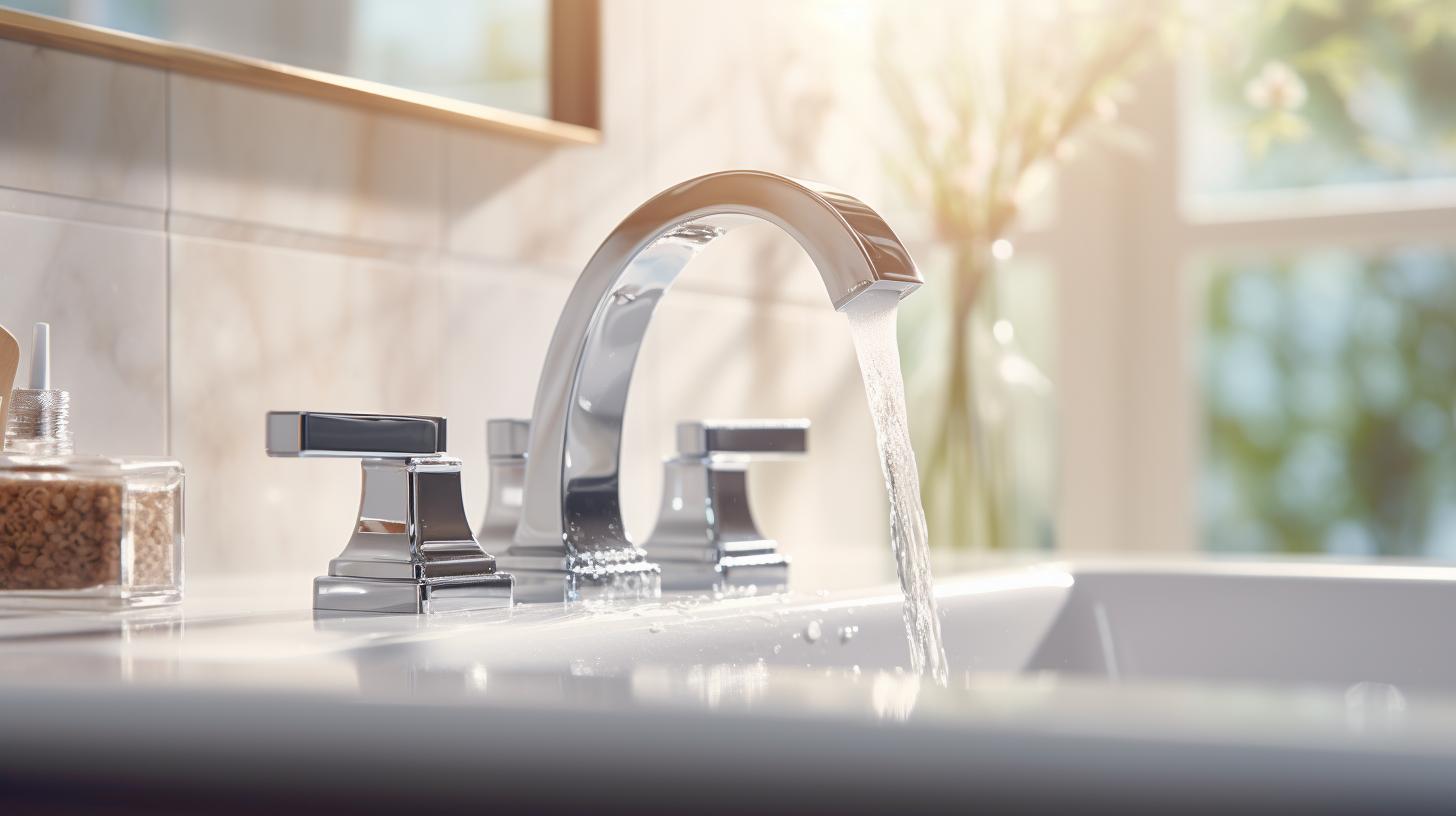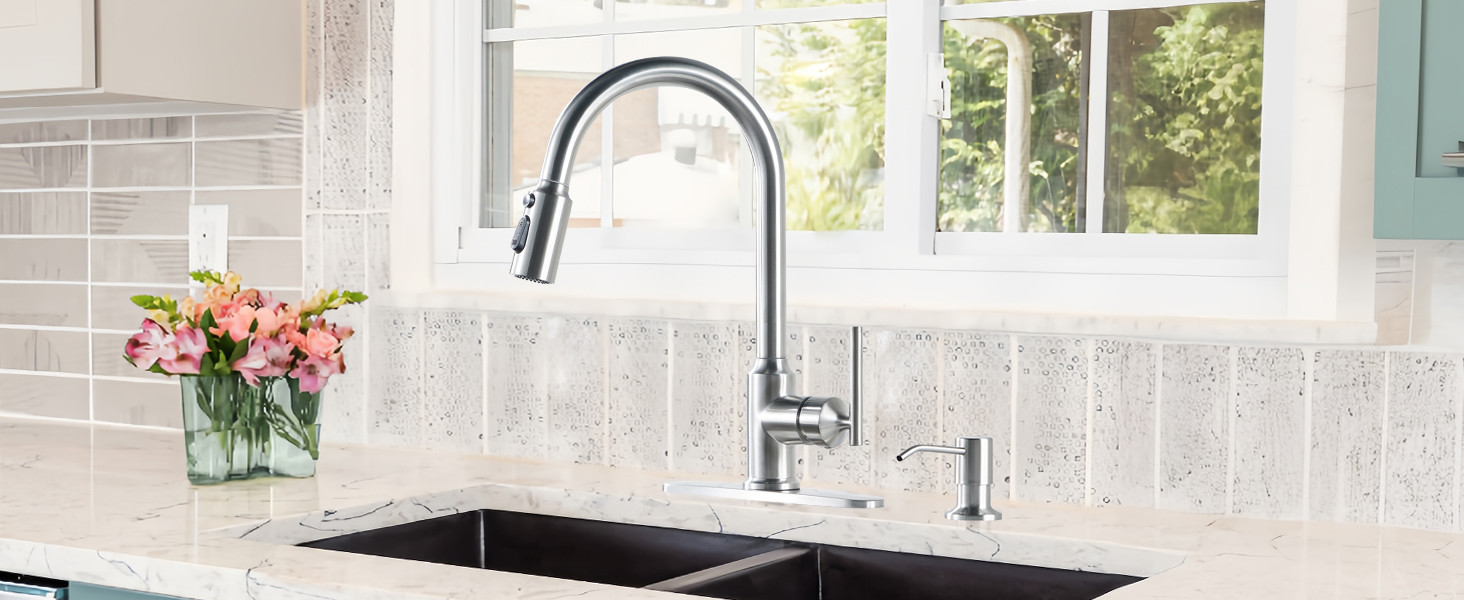Maintaining cleanliness in your kitchen and bathroom sinks goes beyond just cleaning faucets. It’s equally important to pay attention to clean a faucet head and handles, as they also accumulate bacteria, stains, and smudges. The faucet head, in particular, is prone to hard water deposits and mineral buildup, which can affect water flow.
To ensure these components remain in good condition and function properly, it’s essential to include cleaning the faucet head and handles as part of your regular bathroom cleaning routine. The following guidelines, provided by experts, explain how to clean them effectively:
Importance of Cleaning Faucets:
Since faucets are our primary water source, it’s necessary to clean them every few months to prevent the accumulation of dirt, debris, and hard water deposits. Mineral deposits from calcium and magnesium, as well as dirt, can gradually build up, leading to hard water stains and reduced water flow.

Cleaning the Faucet Head:
To clean the faucet head, gather some common household ingredients. Baking soda is recommended for freshening stainless steel appliances and items. Rinse thoroughly to avoid leaving any dirt or streaks. Vinegar is another useful ingredient for removing hard water deposits and mineral buildup, but be cautious about your faucet’s finish. Vinegar can damage chrome finishes if left on for too long. It should not be left on chrome for more than two hours, and for nickel, gold, or brass finishes, no longer than 30 minutes.
- Materials Needed:
– Vinegar
– Quart plastic bag
– Rubber band
– Toothbrush
– Baking soda
Steps to Clean A Faucet Head:
1. Fill a plastic bag halfway with a mixture of water and vinegar, ensuring there’s enough liquid to submerge the faucet head.
2. Place the bag over the faucet head and secure it with a rubber band.
3. Let it sit for 30 minutes to one hour. If your faucet has a sensitive finish, do not exceed 30 minutes. You can add baking soda for extra cleaning power.
4. After removing the bag, run hot water and use a toothbrush to scrub away any loose debris.
5. Wipe down the fixture with soap and water or a mild neutral pH cleaner. Use a toothbrush to clean the crevices thoroughly.
Removing Hard Water Stains and Deposits:
If stubborn hard water stains and deposits persist, and your water flow is affected, consider using powdered citric acid. However, be careful as some faucets may not tolerate this ingredient, and it can cause eye irritation.
- Materials Needed:
– Powdered citric acid
– Towel
– Pliers
– Toothbrush
– Vinegar
Steps to Remove Hard Water Stains:
1. Dissolve about 3/4 cup of citric acid in 1 gallon of boiling water and fill a plastic bag with the mixture.
2. Secure the bag over the faucet with a rubber band.
3. If you can’t place a bag over the faucet, spray the cleaning solution on hard water deposits, let it sit for 30 minutes, scrub as needed, and then wipe with soap and water. Avoid using it on soft, porous surfaces like marble, granite, and soapstone.
4. If water flow remains poor, remove the faucet aerator (the small screen at the spout’s end) and clean it. Carefully unscrew the aerator, using pliers if necessary (but protect the surface with a towel).
5. Soak the aerator in vinegar for 30 minutes and scrub away the buildup with a toothbrush.
6. Rinse with water and reattach the aerator to the faucet.
Cleaning Faucet Handles:
Don’t overlook cleaning the faucet’s handles. Regularly cleaning the exterior and handles helps prevent hard water stains, mildew, mold, and germs. It’s recommended to include this task in your weekly cleaning routine.
Materials Needed:
– Mild pH-neutral cleaner
– Microfiber towel
– Toothbrush
Steps to Clean Faucet Handles:
1. Spray the fixtures with a mild pH-neutral cleaner and let it sit for a few minutes.
2. Use a toothbrush to scrub the perimeters of the fixtures.
3. Wipe and polish the handles with a microfiber towel.
4. For tough water stains, spray a mixture of 2 to 3 tablespoons of citric acid and water.
By following these expert-approved steps, you can keep your faucet head, handles, and sink in optimal condition, ensuring they remain clean and functional.







